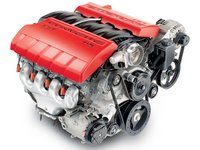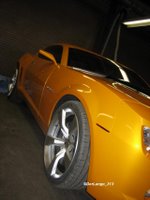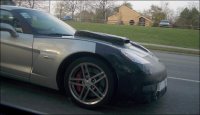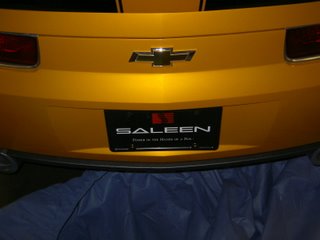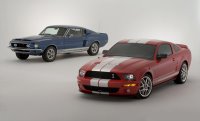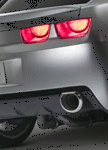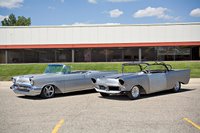
Source: www.buffalonews.com
September 17, 2006 - Fred O. Williams
Will the rebirth of a famed Detroit muscle car pump up an ailing Buffalo axle plant?
Workers at American Axle and Manufacturing are waiting expectantly to hear if they're selected to carve steel for General Motors' revamped Camaro. The update of the popular 1960's era model will come snarling off the the assembly line in nearby Oshawa, Ont., in 2008.
"They have new work, they haven't announced where it's going to go," a union official said of GM. Word of the selection is expected as soon as October.
While its peers in the auto industry have announced downsizing moves to cope with the industry's slump, the Detroit-headquartered maker of gears, axles and steering parts has so far stayed mum.
Ford accelerated its downsizing last week, announcing early retirement incentives and buyout plans worth up to $140,000, for which all 1,340 of its production workers at the metal stamping plant in Hamburg are eligible. That attrition plan joins buyouts under way at General Motors and Delphi that will draw more than 1,700 local workers out of their jobs by year end.
Workers and union officials say that American Axle is likely to follow suit with some sort of labor overhaul. Labor talks are quietly going on about a lower starting wage for new hires, a move that some individual plants, including one in Cheektowaga, have already adopted. Also in the works are talks for reduced union work rules at some older plants.
At Delphi, a lower starting wage for new hires combined with early retirement incentives is transforming the company's Lockport plant into one with a smaller, lower-paid work force.
United Auto Workers officials wouldn't comment on the talks at American Axle, which were set in motion by the union's last contract with the company in 2004. Company spokeswoman Renee Rogers would say only that American Axle is in discussions with a number of its plants.
With about 2,000 jobs at its three area plants in Buffalo, Cheektowaga and the Town of Tonawanda, American Axle employs more locally than Ford's stamping plant, with about 1,500, and about as many as GM's sprawling engine plant, which will have about 1,960 jobs after incentive plans are complete at year end.
But there's a hitch. Of those supposed 2,000 jobs, hundreds are on layoff. Some 500 workers are idle from American Axle's largest area plant, the Delavan Gear and Axle plant on Buffalo's East Side, leaving about 700 production workers there on on the job, a union source said. The company would neither confirm or deny the figure. Though layoffs at the former GM unit come with nearly full pay, they're hardly a good sign for the plant's future.
Being on board the Camaro could help bring back some of the hundreds of workers on layoff. American Axle specializes in rear-drive parts, putting it in the running to supply the performance-oriented car.
Some good news from Detroit would help offset a lot of the other kind that has been worrying American Axle. Rear-drive pickups and SUVs, for which it makes parts, are out of favor, with gas prices over $2.50 a gallon. Main customer GM expects to cut its overall production by 12 percent in the fourth quarter.
The Delavan Avenue plant and the Tonawanda Forge are two of the company's original sites acquired from GM in 1994, which company officials have cited as cost centers in meetings with the union.
Recent layoffs at the Buffalo plant, characterized by the company as "minor" (no specific number given), were taken as a sign by one retiree that American Axle is "preparing to pull out of Buffalo at the end of the contract," which ends in 2008.
Nothing from the company or the UAW backs up the rumor, which has floated around the shop before. But neither is it an isolated worry, judging by messages on Internet chat boards and calls and e-mails.
Unlike bankrupt Delphi, American Axle is still in the black, but its sales and profits are declining.
"They're struggling a bit - most of their business is Big Three business - but they're hanging in there," said Bruce Belzowski, director of the Center for the Study of Automotive Transportation at the University of Michigan.
With volumes from automakers shrinking, the axle maker's sales sank 5 percent last year while operating profits fell 63 percent. In the first half of this year, sales were about level with last year's, but operating profits slipped 11 percent.
The question facing the company is whether the dip in sales of larger vehicles is a temporary reaction or a long-term shift in buyers' tastes, signaling the end of the SUV boom. In that light, winning work on rear-drive autos like the Camaro is especially important. GM expects to sell 100,000 of the cars a year.
Rather than pulling in his horns, chief executive Richard Dauch remains bullish on the auto industry, or at least his piece of it. In one comment to reporters in Detroit last month he said he might "bolt on" parts of troubled Delphi to his company, when the fellow parts maker gets around to selling some assets.
He also expressed no sympathy for auto supply companies that reject the competitive realities of a global manufacturing market. Companies should benefit from lower labor costs abroad, instead of being disadvantaged by them. "If you can't accept the medicine," he was quoted as saying by the Detroit News, "go ahead and die."
